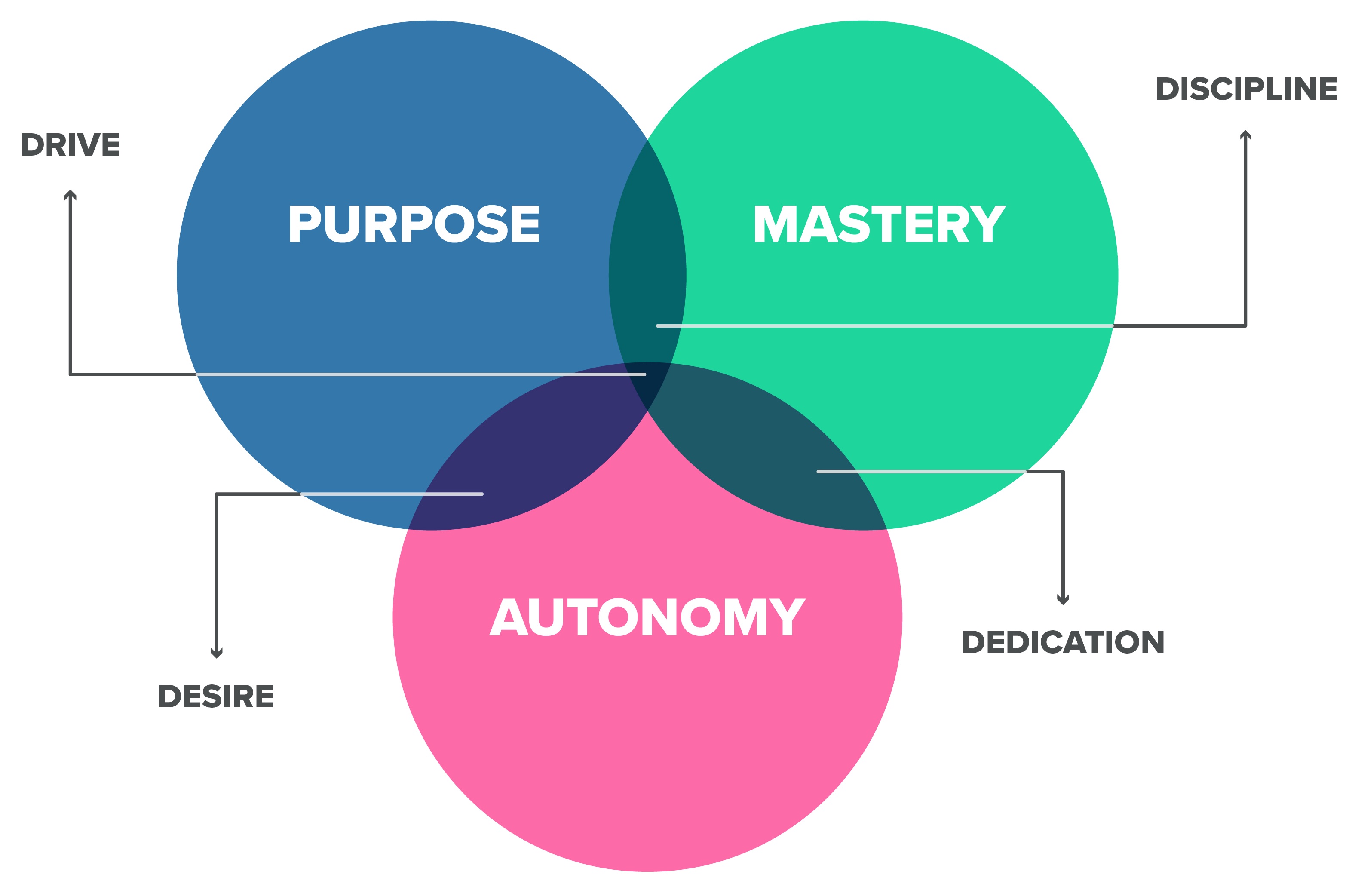Getting motivated to do our science can be challenging. Likewise, if we are running a lab or other kind of research group, it can be challenging to cultivate and maintain an environment where we all feel fulfilled and motivated by our research. Recently I have been reading and reflecting on this topic, and the work from Daniel Pink has stood out. Pink is a popular writer and his work (most notably his book Drive) outlines three key “MAP” motivators: Mastery (we want to get better at stuff), Autonomy (we want to direct our lives), and Purpose (we want to contribute to something big and meaningful). For this post we will take some time to discuss and reflect on the MAP criteria for motivation, and how we can use them to motivate our research.
To summarize, Pink outlines three basic criteria for motivation: Mastery, Autonomy, and Purpose. Mastery is defined as the opportunity to get really good at something (e.g. programming). It’s that same motivation that pushes us to keep practicing something like a guitar until we get good. We can use this concept in our everyday scientific lives by recognizing that the ability to get good at something can be highly rewarding. For me personally, I have really enjoyed the opportunity to learn and practice coding, and that can really motivate me to dig into my research and push through some procrastination.

Diagram of Pink’s three MAP motivational forces. Source.
Autonomy is described as the ability to direct our lives, and it can be another big motivational aspect of science. For example, it can be highly rewarding struggling through an experimental design, and going through the work of actually doing that experiment can feel easier than if it was just something handed to us. Incorporating some autonomy into our research can be really motivating.
The final motivational criteria is purpose, which means our research is solving an important problem and/or is part of a compelling bigger picture. In practice, this can mean reminding ourselves of the fact that we are working to cure a disease or some other big picture goal. It can be easier to feel motivated to work on projects that have a clear positive impact, and even just articulating that impact can be motivational.
In addition to these criteria, Pink further highlights the importance of fair pay. As scientists, by receiving pay at a rate where we don’t need to worry about basic things in life, like making reasonable rent for the month, we can free our time to worry about our science and research. There are of course many other reasons why people should be paid fairly, and this is just one of many.
So we know the three criteria and at this point we are all thinking about how these have an obvious “management” value. But how can we personally apply these? One way I use this information is to inform my decision on what makes a great lab to join or place to work. I want to work in a place (a lab, a company, a university, etc) that motivates me. So what should I look for? With the criteria above, I can look for environments that foster creativity through fair pay, an ability to keep learning and developing new skills, and a place that fills me with purpose. It’s always hard to get a feel for a place during an interview, but this little checklist can help identify red flags and help inform the final decision.
For those of us mentoring someone like a student, or running a research group, these criteria can also be helpful. We all want to cultivate a positive and rewarding scientific environment for our colleagues and mentees, and we can help do this by promoting opportunities for the MAP motivators (for example, giving a student the opportunity to learn to code) as well as making sure they are paid and rewarded fairly. We can use these criteria to make our labs and environments better places to work, and help each other get through science which is alreay challenging enough.
Daniel Pink’s insights into motivation can provide some helpful guidance and resources for us in the sciences to keep ourselves motivated as well as fostering a motivational environment for our colleagues. His book Drive is a simple read and you can find that at the library, online, or a local bookstore. Additionally, he has a nice YouTube video that describes some of this insights. Motivation is a huge and complex topic, but hopefully these simple criteria help us navigate the space in some way.
comments powered by Disqus